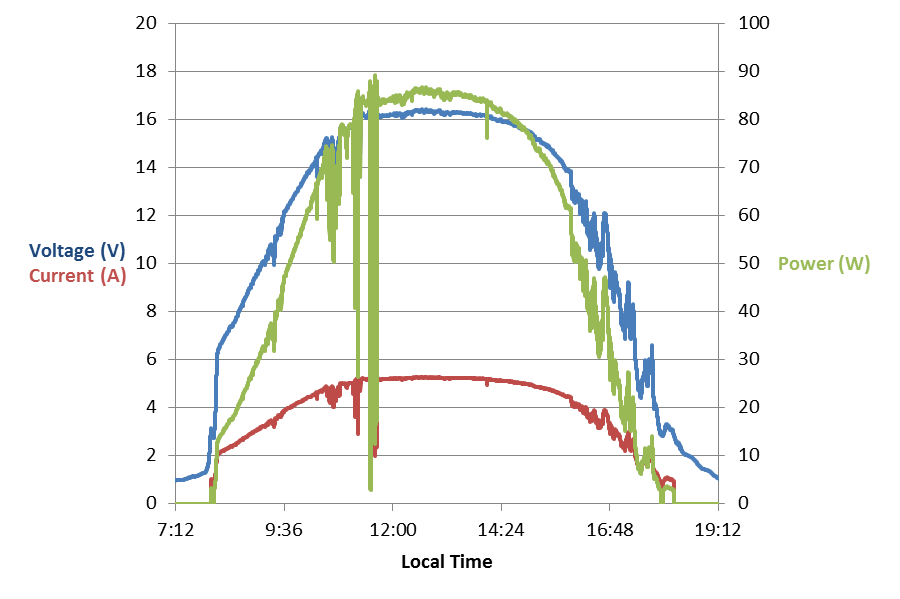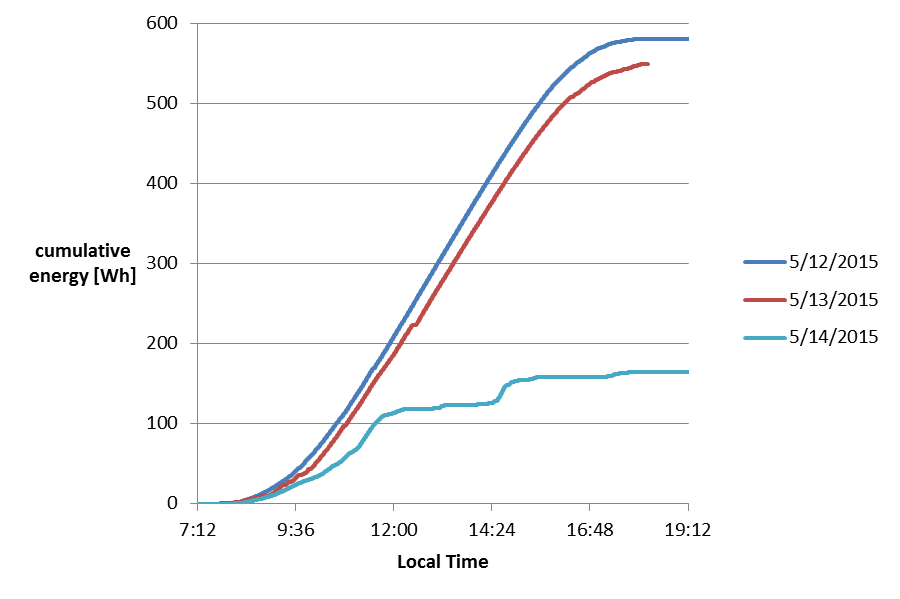I wired the panel to a bank of power resistors with a combined resistance of about 3.1 ohms and started logging data using my PowerLog 6S (a super-useful tool) Fortunately, the weather has ranged from mostly sunny three days ago to mostly cloudy with thunderstorms today, excellent for testing the panel in a variety of conditions. Here's a graph of voltage, current, and power from the mostly sunny day. The panel doesn't quite reach the 100 watt rating, but keep in mind that the sun is not directly overhead even at noon, and I'm not operating the panel at its max power point (17.7 volts).
Of course I still have to worry about the panels getting sea scum on them, bird droppings, etc., or operating in the winter. So I'm not about to propose using only one panel on the boat instead of two. But it's comforting knowing that the panels really do pump out power as advertised.


 RSS Feed
RSS Feed